
Showers, along with a few strong to severe thunderstorms, are expected from the Great Lakes, New England and southward into the Ohio and Tennessee Valleys. In the wake of this system, a stronger storm is expected to track from the Pacific Northwest, Plains and through the Eastern U.S. this weekend. Strong winds, showers and a larger drop in temperatures are expected this weekend into Monday. Read More >
Overview
|
Periods of rain worked back into eastern Kentucky early on February 20 as a warm frontal boundary lifted north across the Commonwealth. A cold front brought additional rainfall through the afternoon and evening, before drier conditions worked into eastern Kentucky during the morning of February 21. Rain quickly spread back north that evening into the 22nd with southeastern Kentucky continuing to see prolonged light rain into the afternoon of the 23rd. A cold front brought additional rain to much of eastern Kentucky late on the 23rd. A spike in moisture ahead of this front resulted in additional moderate to heavy rain and high rainfall rates across portions of eastern Kentucky late on the 23rd. The convection ahead of the cold front that evening resulted in the majority of the flooding and flash flooding issues across eastern Kentucky. Showers and thunderstorms capable of heavy rainfall trained over parts of Wayne, Pulaski, Rockcastle, and other counties along the I-75 corridor, resulting in deadly flash flooding and river flooding along the Cumberland River. Later in the evening, the bulk of the rainfall shifted north to counties along the Mountain Parkway. Flash flooding and river flooding occurred in Powell, Wolfe, Breathitt, Magoffin, and Johnson Counties. Lighter rainfall continued into the night as flooding issues remained widespread into the 24th. Rainfall amounts from this event ranged from near 2 inches in portions of the Bluegrass region and northeast Kentucky, to greater than 4 inches across locations in southern and southeast Kentucky. This additional water on top of saturated ground continued to promote mud and rock slides across eastern Kentucky, complete with power outages from fallen debris and trees. Pikeville experienced a massive rockslide early on February 22, resulting in several cars and a building being damaged. Other impacts included countless roads being inundated with standing water, pavement and water pipes breaking, water threatening homes, roads and bridges being washed away, and rising lake levels. Of the 33 counties across eastern Kentucky, at least 27 were forced to declare State of Emergencies due to rainfall during and before this event. This included Knott County due to over $150,000 in county road damages. Beattyville, Clay City, Harlan, Hazard, Jenkins, Monticello, Paintsville, Pikeville, Salyersville, Stanton, West Liberty, and Whitesburg also declared State of Emergencies. Additionally, the Kentucky Governor declared a State of Emergency across the entire Commonwealth. The persistent rainfall of the winter season and the amount of rainfall from this event led to Lake Cumberland reporting their highest lake level of 756.52 feet on February 26th, breaking the old record of 751.69 feet dating back to May 1984. As a result, Wolf Creek Dam had to release at a record discharge level of 59,880 cubic feet per second. Cave Run Lake also rose to within 6 feet of their record pool elevation. Buckhorn Lake came within 10 feet of their all-time record, partially resulting in Kentucky Highway 257 near Confluence having flood waters cover the highway isolating 40 to 50 families for numerous days following the end of the flooding rains. |
Laurel River Lake Spillway (Courtesy of Laurel County Emergency Manager) |
River Flooding
Kentucky River Flooding:
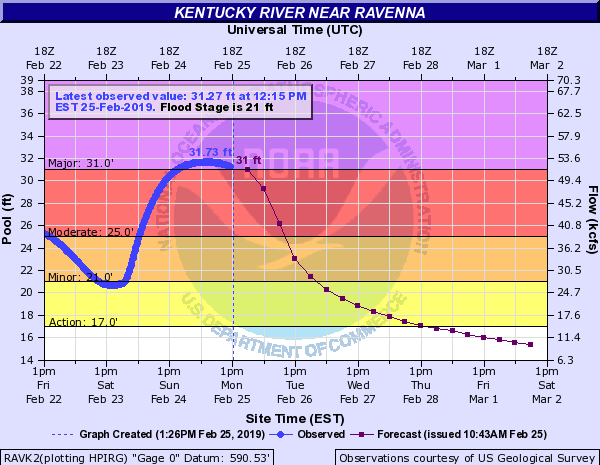 |
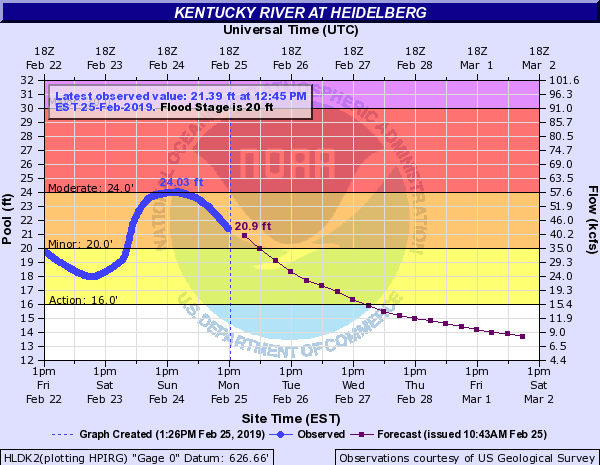 |
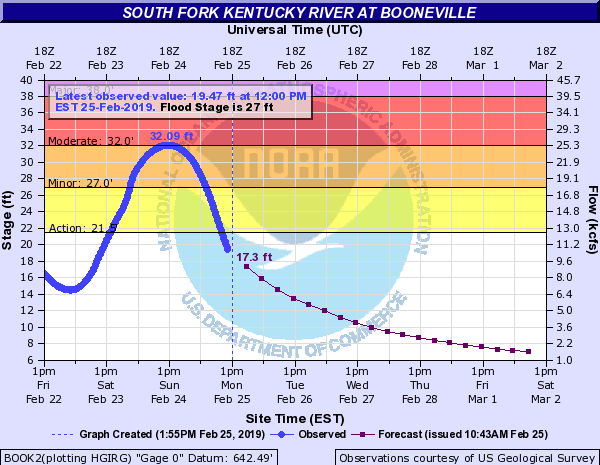 |
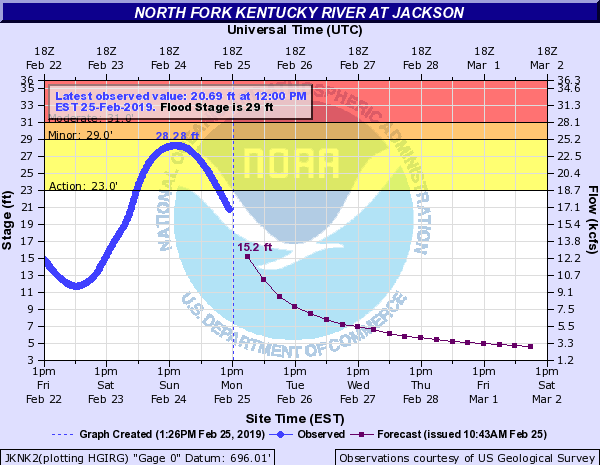 |
| Ravenna | Heidelberg | Booneville (South Fork) | Jackson (North Fork) |
Cumberland River Flooding:
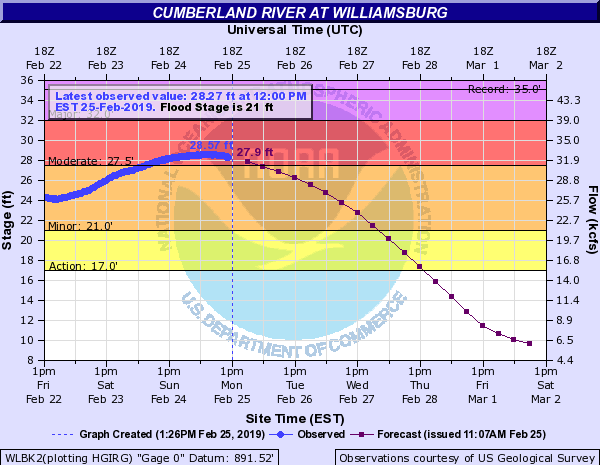 |
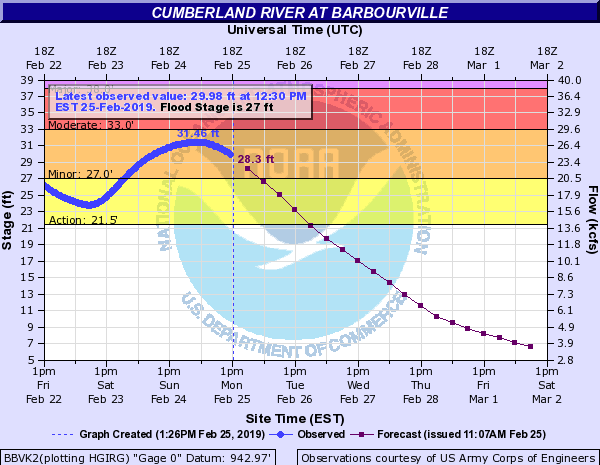 |
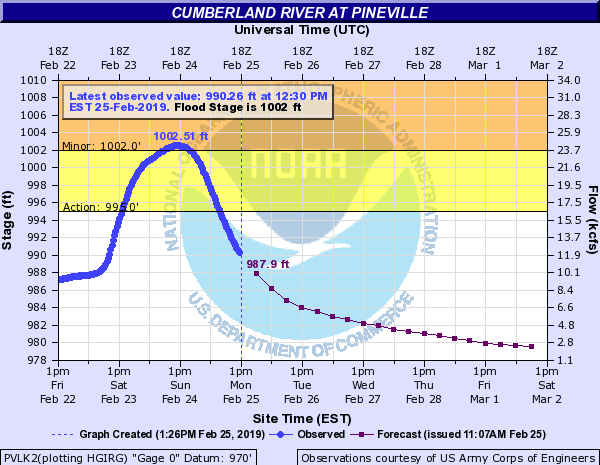 |
| Williamsburg | Barbourville | Pineville |
Red and Big Sandy River Flooding:
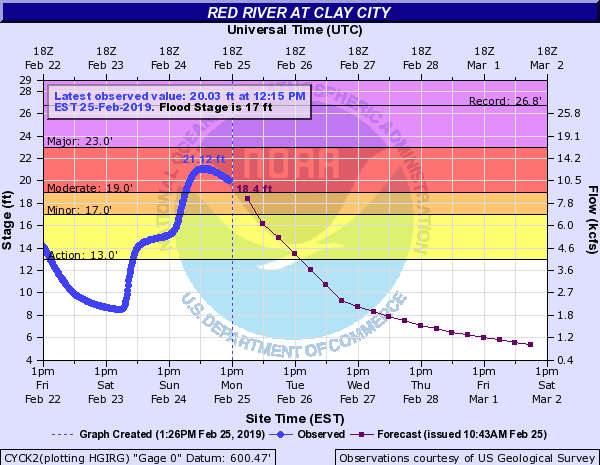 |
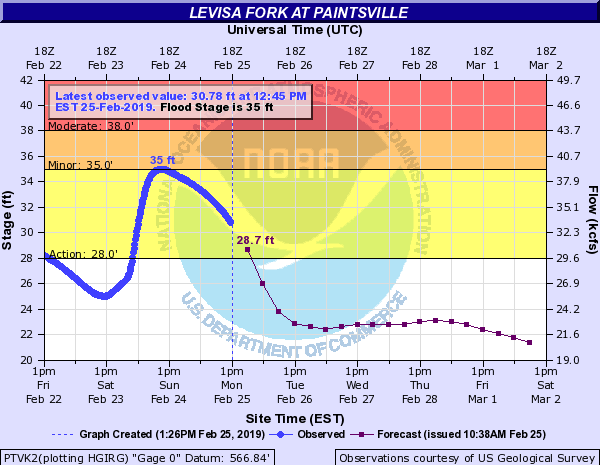 |
| Clay City (Red River) | Paintsville (Levisa Fork) |
Photos
Flooding Pictures:
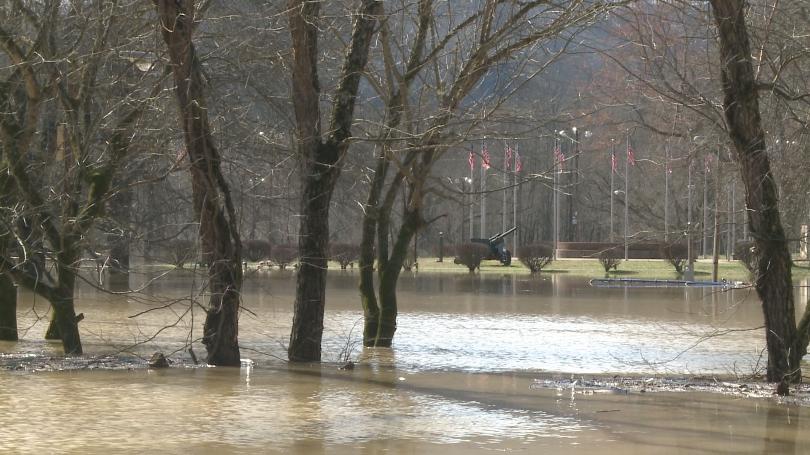 |
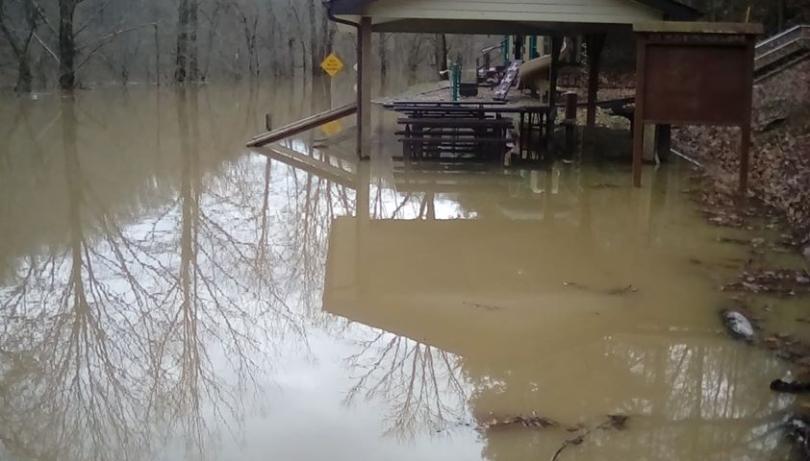 |
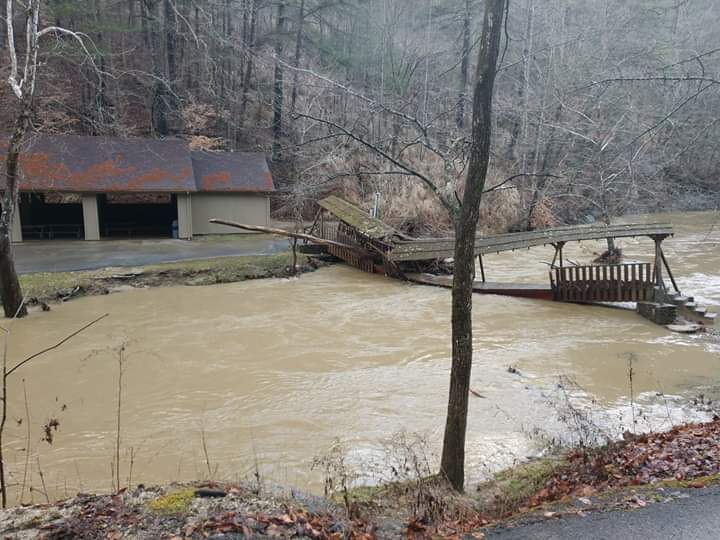 |
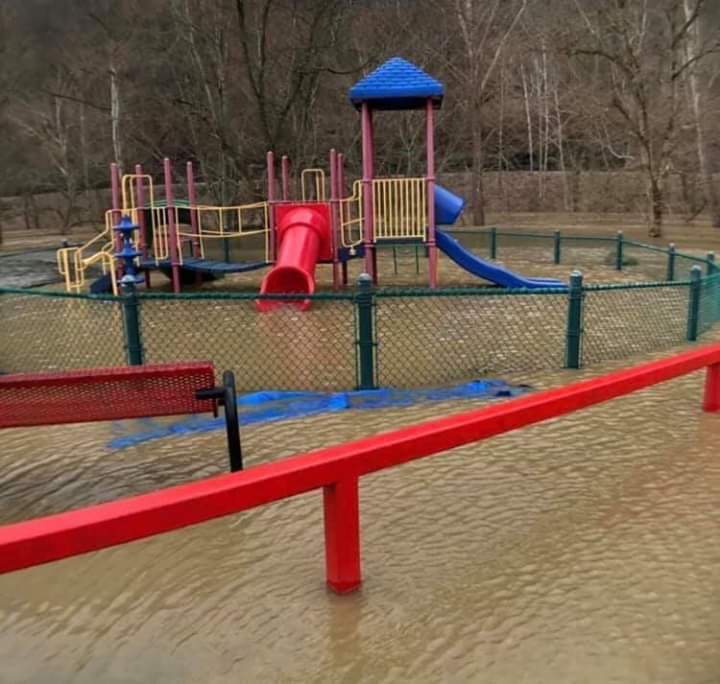 |
| Archer Park in Prestonsburg - Floyd County (Courtesy WYMT) |
Confluence, KY - Leslie County (Courtesy WYMT) |
Footbridge at Natural Bridge State Park - Powell County (Courtesy Johnny Ray Feltner) |
Douthitt Park, Jackson, KY - Breathitt County (Courtesy Johnny Ray Feltner) |
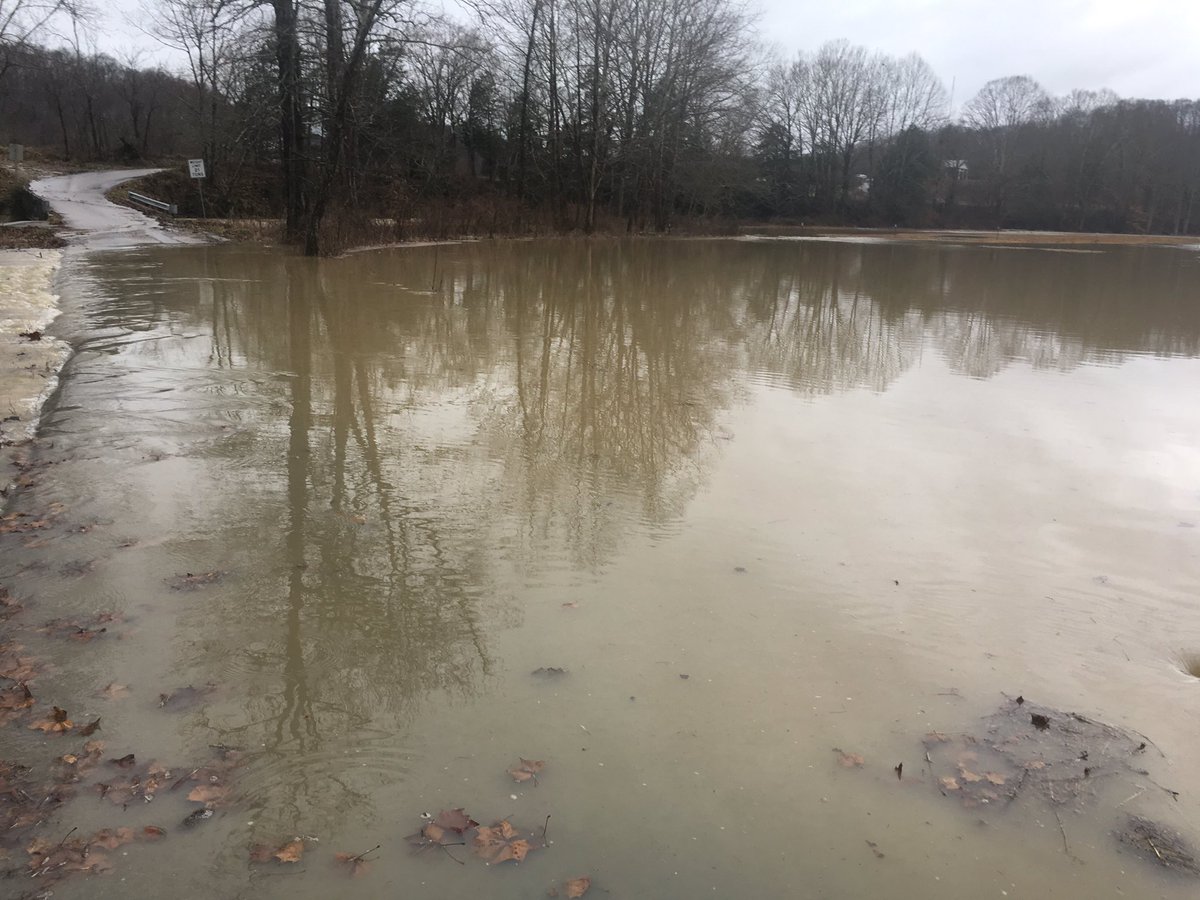 |
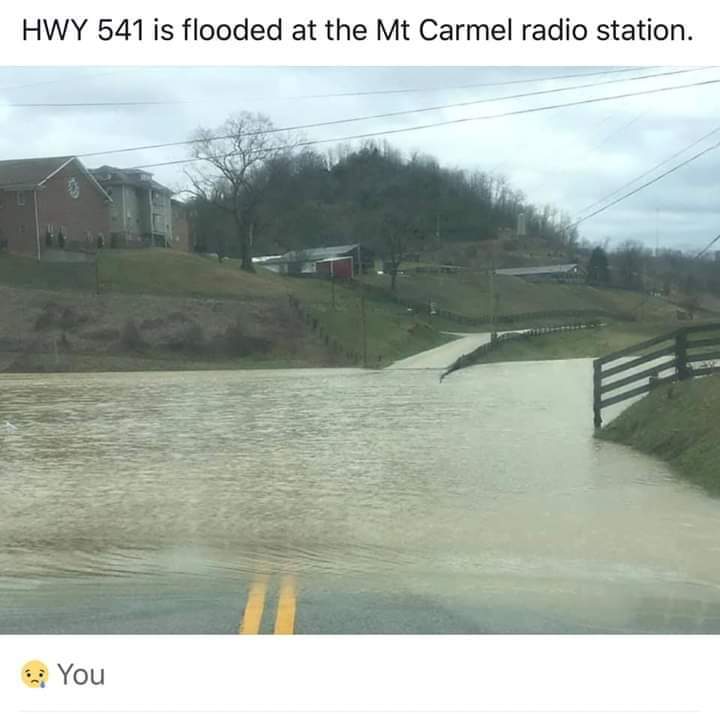 |
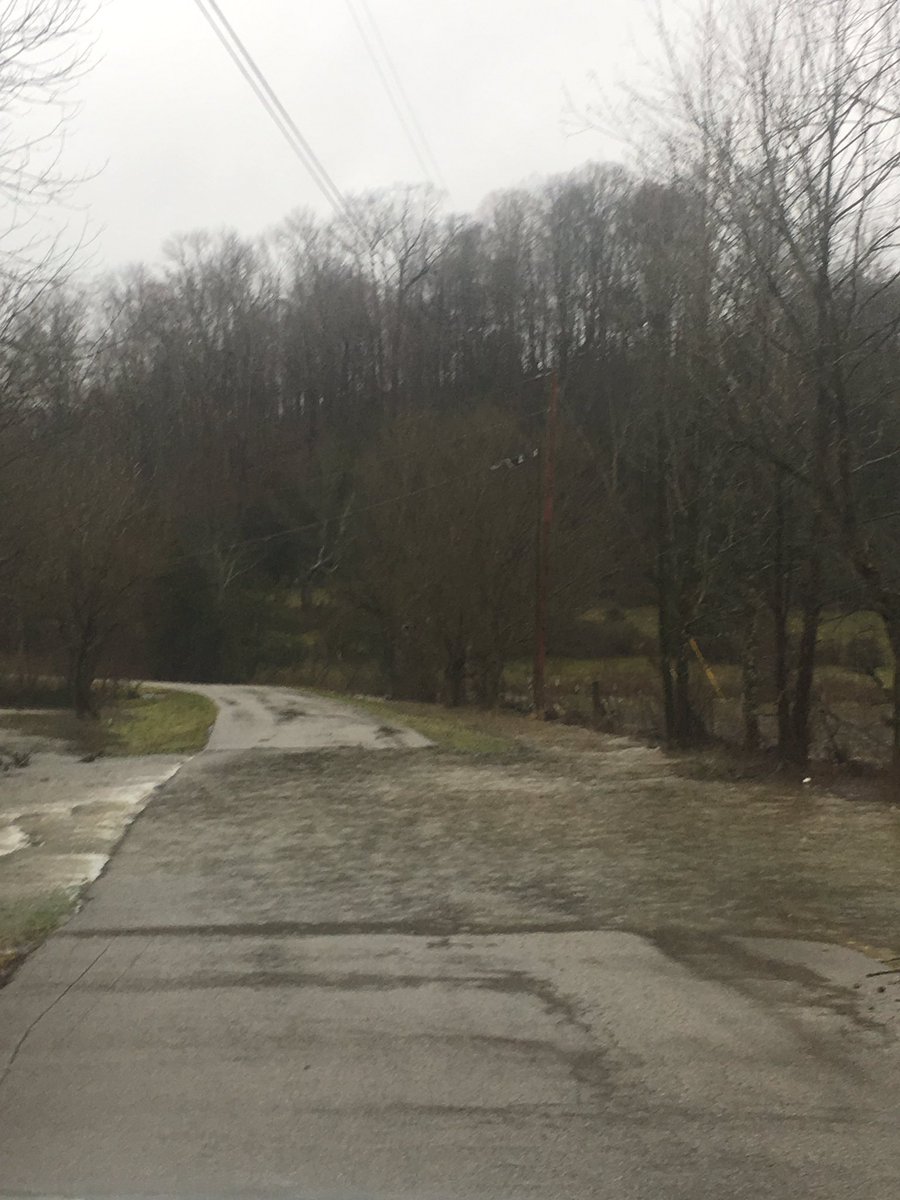 |
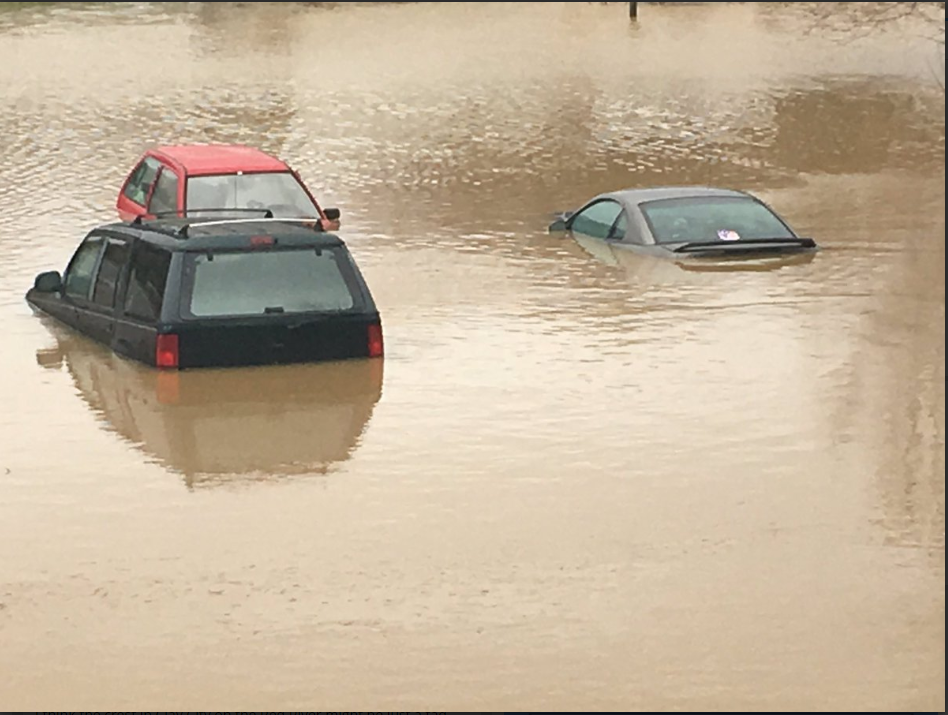 |
| Roundstone Creek near Mount Vernon - Rockcastle County (Courtesy Jordan Smith) |
Highway 541 near Kentucky Mountain Bible College - Breathitt County (Courtesy Johnny Ray Feltner) |
Lake Linville Flooding Near Mount Vernon - Rockcastle County (Courtesy Jordan Smith) |
Flooding in Rockcastle County (Courtesy Jordan Smith) |
Rock/Mud Slides:
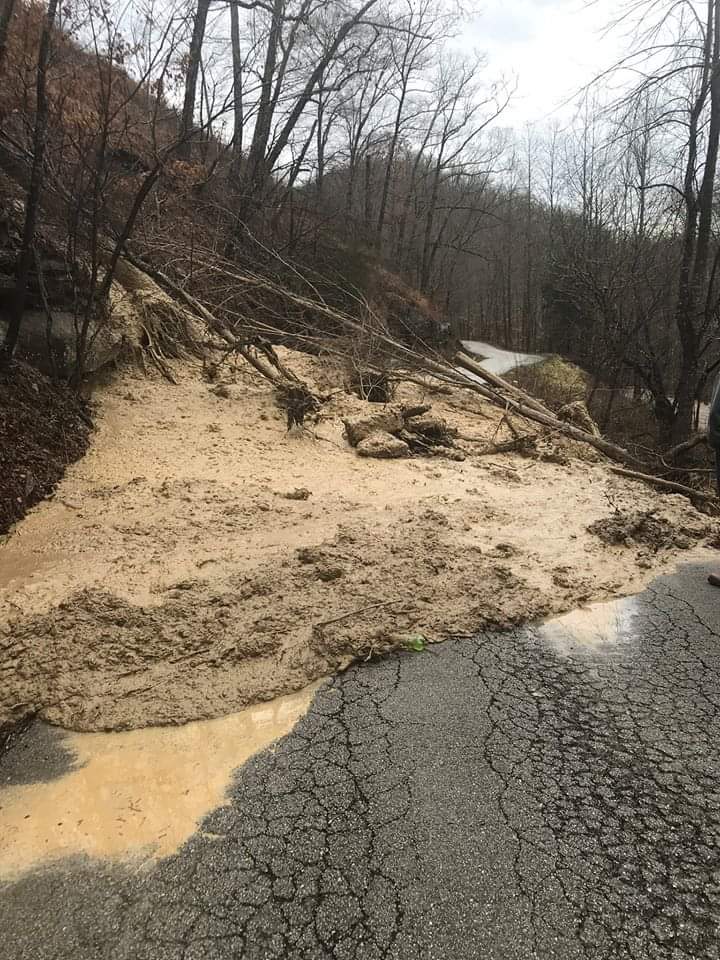 |
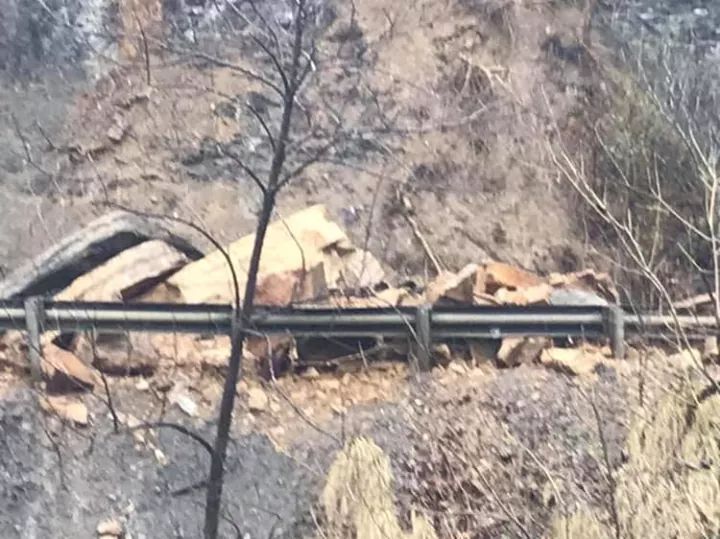 |
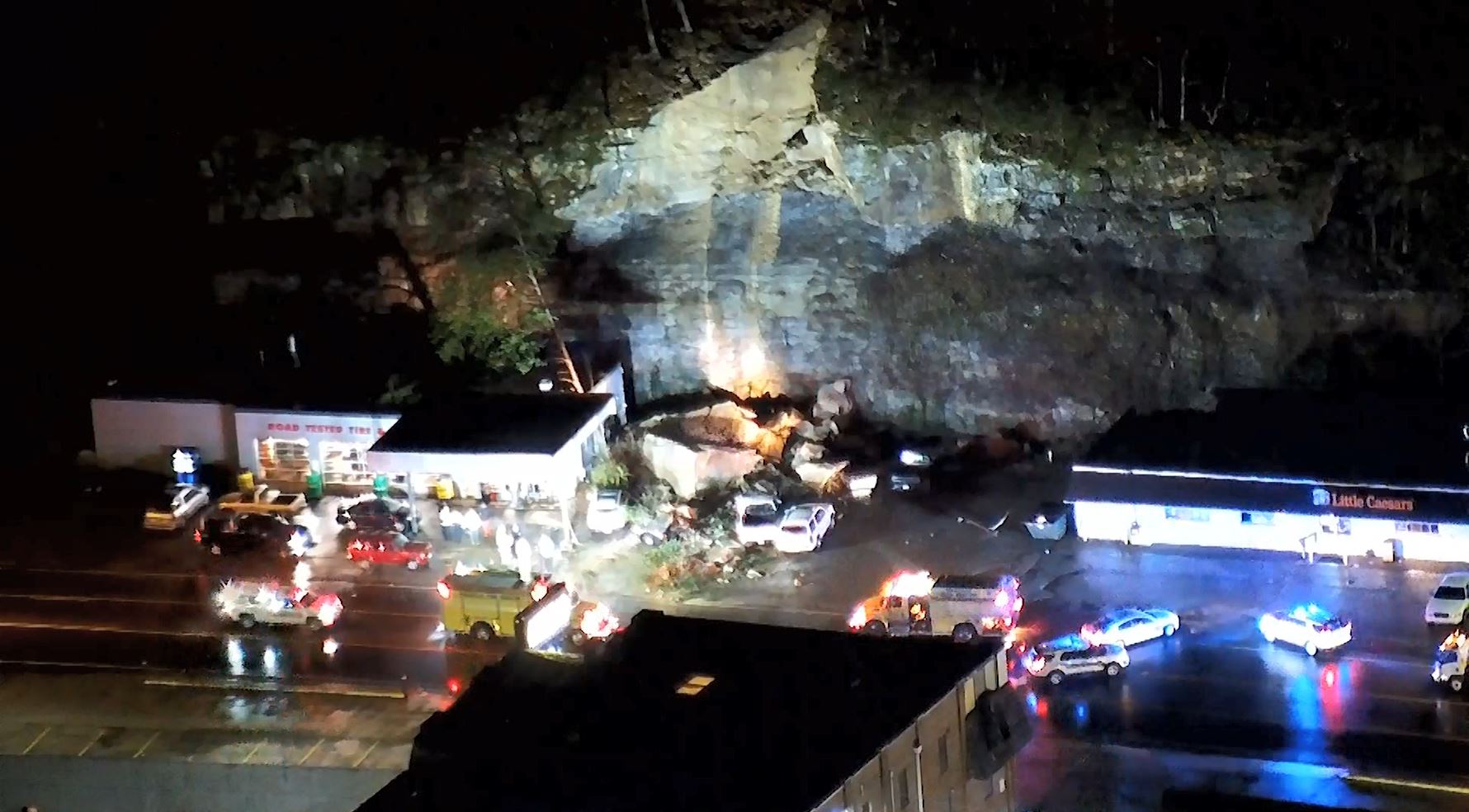 |
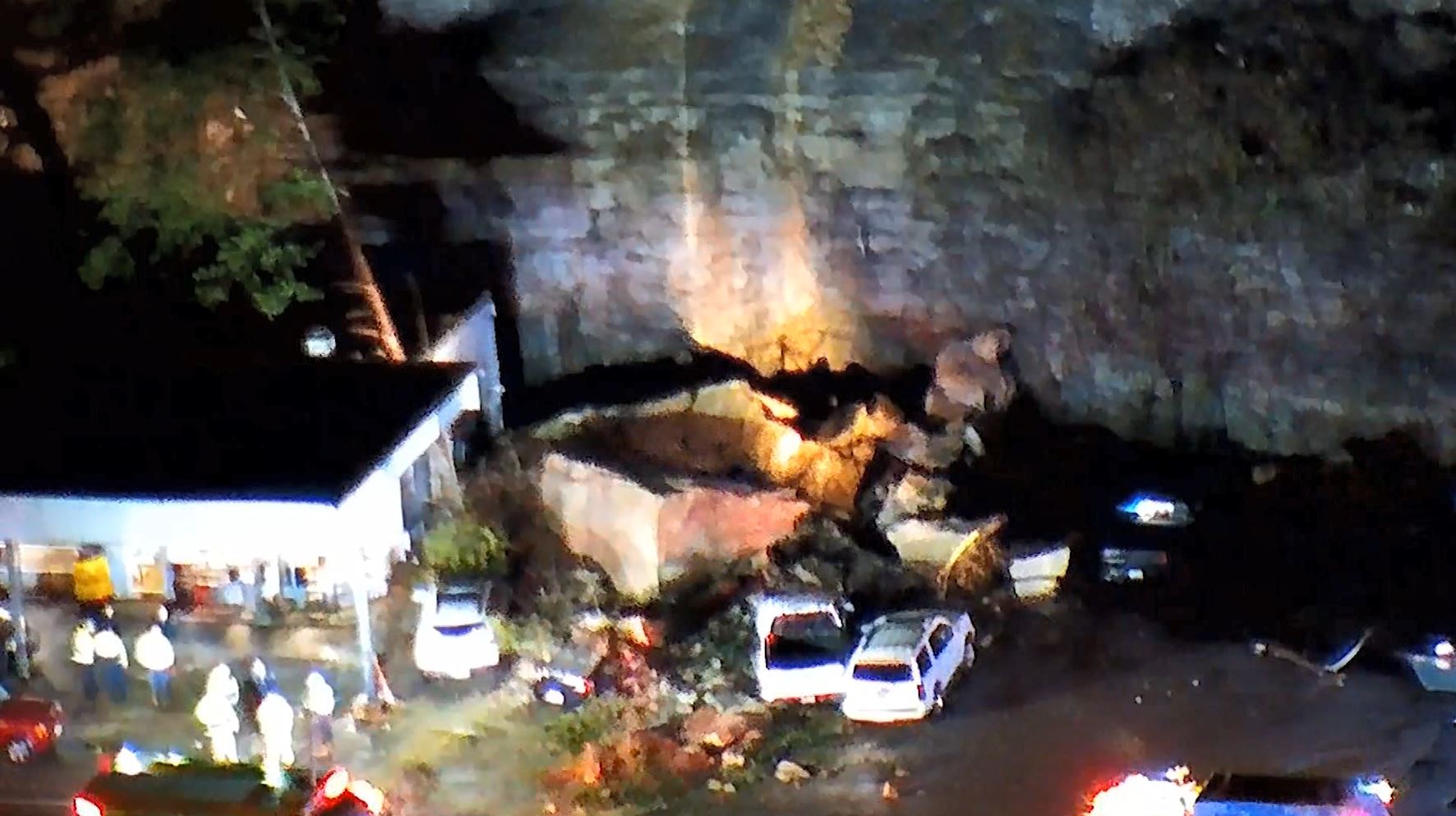 |
| Bowlings Creek - Breathitt County (Courtesy Johnny Ray Feltner) |
Jonancy - Pike County (Courtesy Johnny Ray Feltner) |
Pikeville - Pike County (Courtesy WYMT) |
Pikeville - Pike County (Courtesy WYMT) |
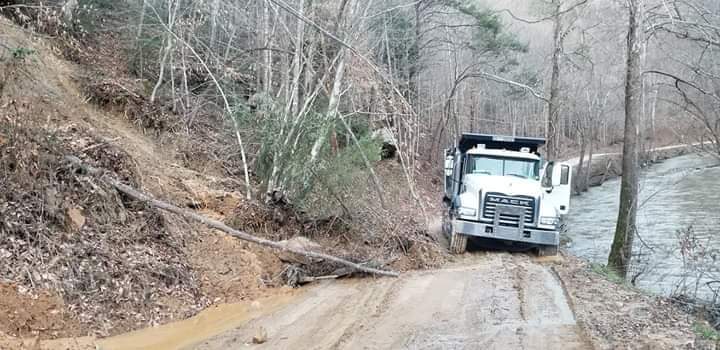 |
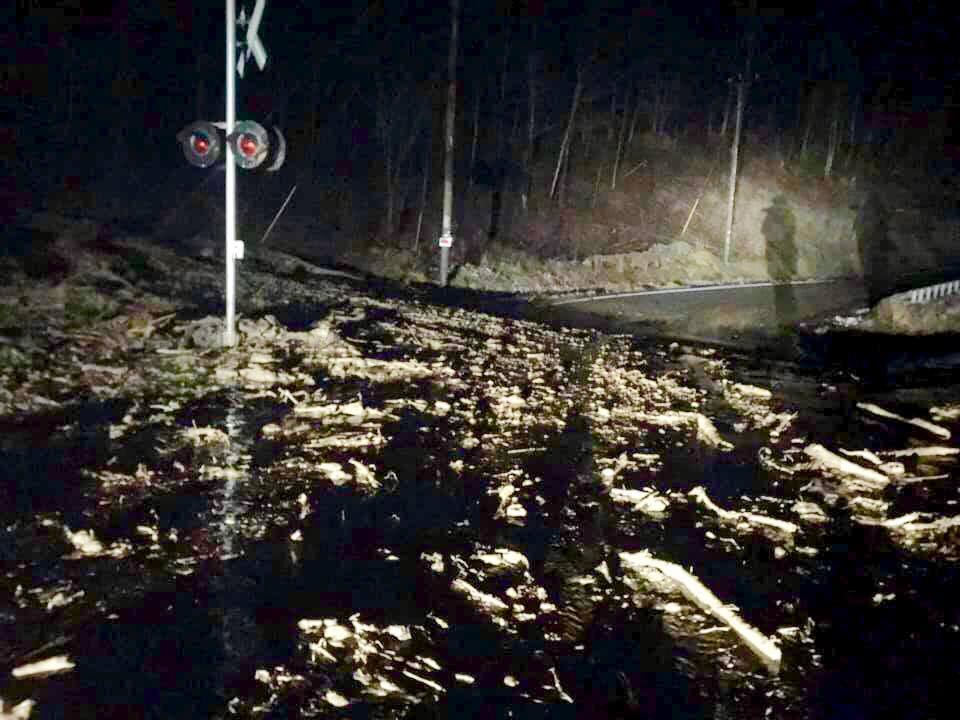 |
| Quicksand Creek Road - Breathitt County (Courtesy Johnny Ray Feltner) |
Highway 7 - Letcher/Knott County Line (Courtesy Troublesome Creek Times) |
Rain Reports
5 Day Rainfall Totals Ending Sunday (February 24th) Morning Location Amount Provider Beattyville 4n 5.21 in COOP Meldrum 5.21 in HADS Billows 5.16 in HADS Heidelberg 5.11 in USARMY-COE Harlan 3n 5.11 in UCOOP London Airport 5.07 in NWS Booneville 5.02 in HADS Stearns River 4.89 in USARMY-COE Lawson 4.81 in COCORAHS Gray Hawk 4.75 in HADS Lost Creek 4.74 in COCORAHS Cumberland River 4.71 in GOES Oneida 4.70 in COOP 4 SW Blue Heron 4.65 in HADS Tallega 4.63 in HADS Paintsville River 4.59 in USARMY-COE Saxton 4.56 in HADS Jackson 4.47 in HADS Corbin Dam 4.46 in USARMY-COE Somerset 4.45 in RAWS Booneville 12sw 4.44 in COOP Jackson Airport (NWS) 4.42 in NWS Manchester 4.42 in USGS Koomer Ridge 4.34 in RAWS Barbourville 4.32 in HADS Hazard 4.25 in HADS Buckhorn Lake 4.24 in COOP 1 S North Corbin 4.13 in HADS Hyden River 4.10 in USARMY-COE Laurel Lake Dam 4.10 in USARMY-COE Farmers 4.06 in HADS 1 SW Pikeville 4.01 in HADS Barnetts Creek 4.01 in HADS Sand Hill 3.97 in HADS Inez 2e 3.97 in COOP Prestonsburg 3wsw 3.97 in COOP Jackson Apt 3.94 in RAWS Williamsburg 3.94 in HADS Paintsville 1e 3.82 in COOP Stanton 2w 3.79 in COOP 1 ENE Gates 3.66 in COCORAHS Cressy 3.64 in UCOOP Levisa Fork Telemark 3.60 in COOP Skyline 3.50 in COOP Big Sandy 3.49 in RAWS Cranks Creek Reservoir 3.46 in GOES Virgie 3.44 in USARMY-COE 2 SE Whitesburg 3.36 in COOP 2 W Fishtrap Lake 3.30 in HADS Elkhorn City 3.26 in HADS Diablock 3.26 in CWOP Whitesburg 3.18 in HADS Carr Fork Lake 3.17 in COOP Cave Run Lake 3.10 in COOP Triangle Mtn 2.89 in RAWS
Environment
Surface Maps:
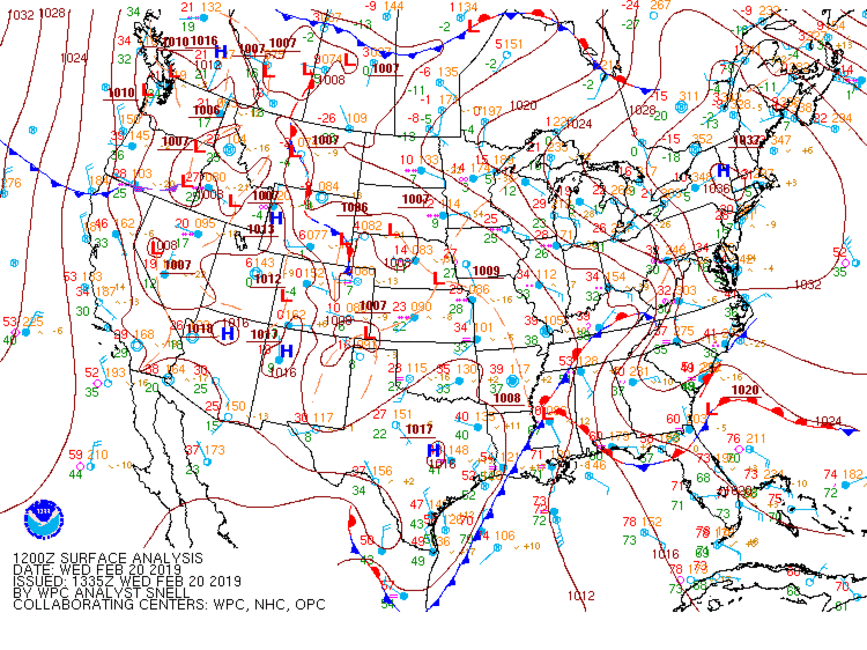 |
| February 20th to February 24th Surface Maps |
Preconditions Heading Into Flood Event:
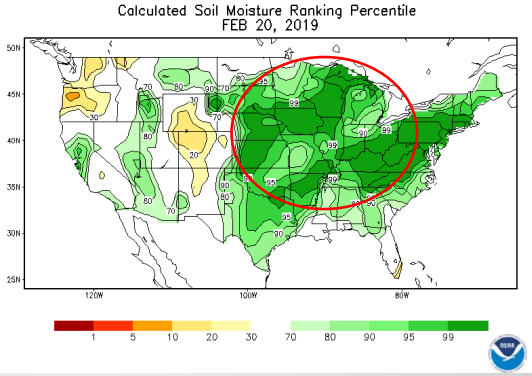 |
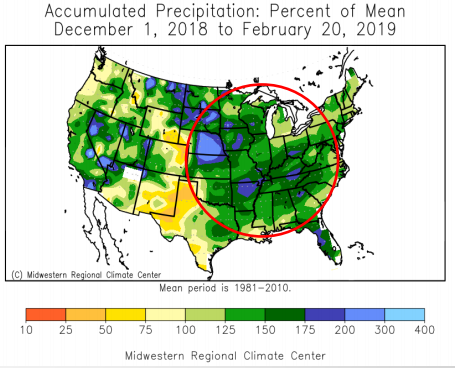 |
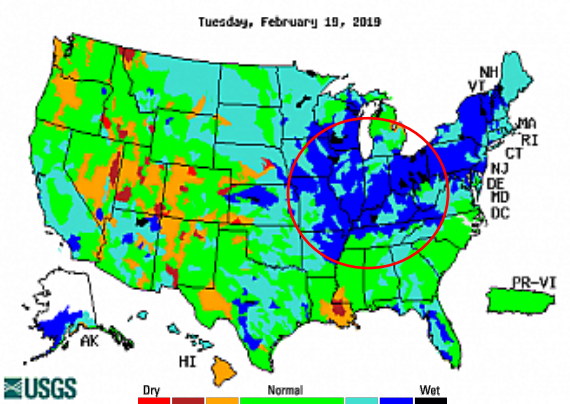 |
| Calculated Soil Moisture Ranking Percentile; February 20th, 2019 | Accumulated Precipitation: Percent of Mean; December 1st, 2018 - February 20th, 2019 | Streamflow; February 19th, 2019 |
Favorable Environment for Flash Flooding and Heavy Rain, February 23rd, 2019:
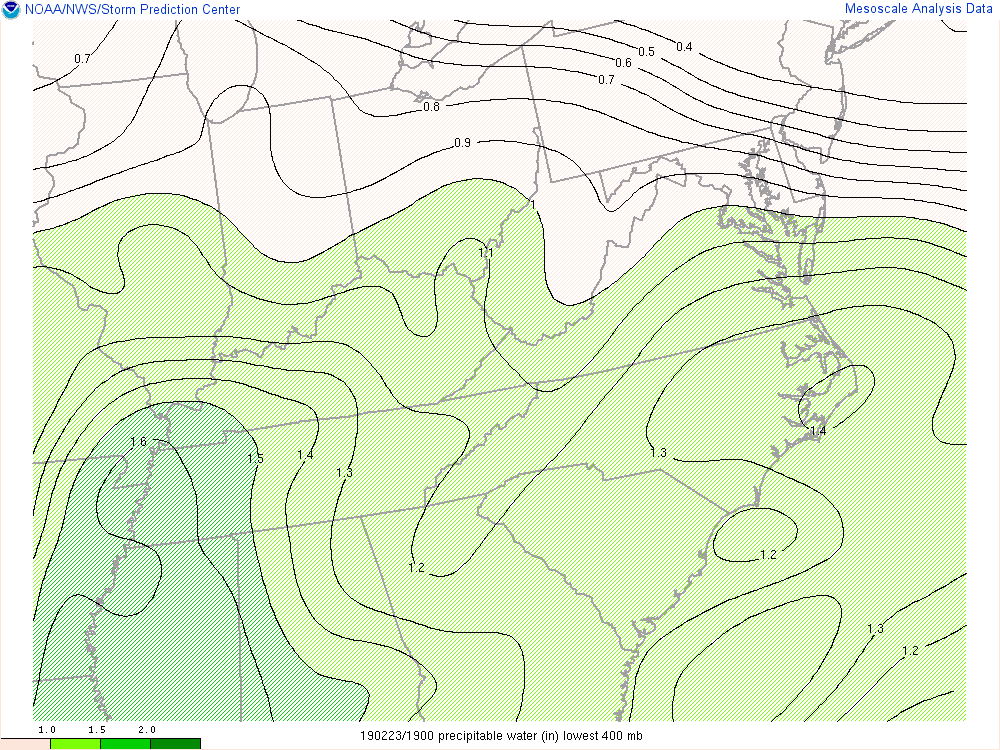 |
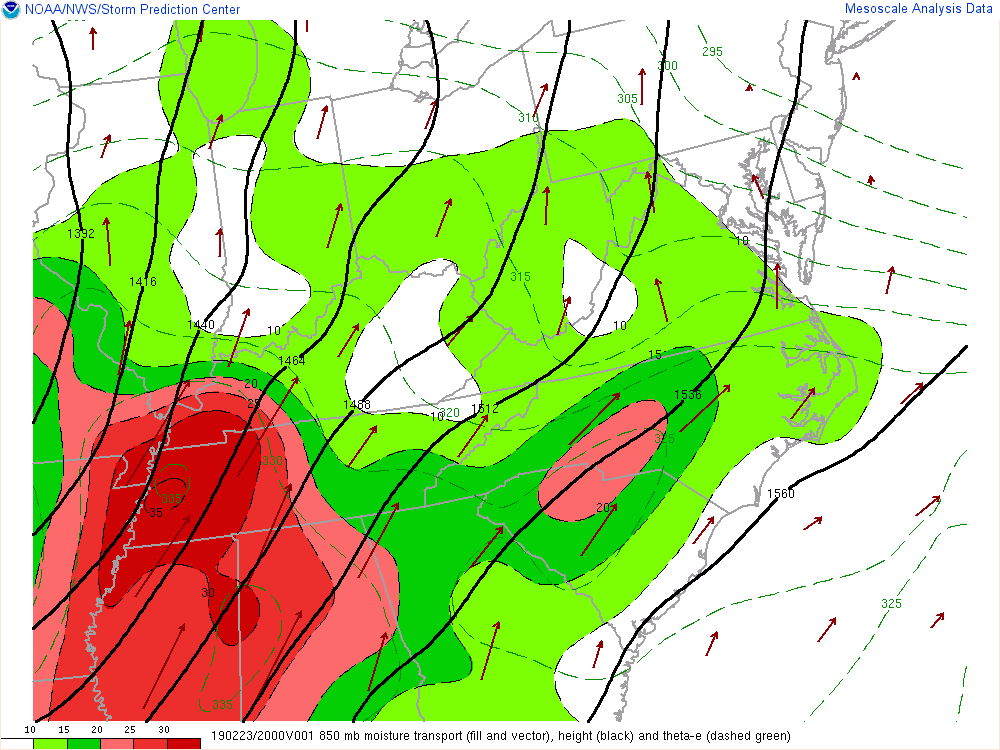 |
| 2 pm EST - 11 pm EST, Saturday, February 23rd Observed Precipitable Water (PW) | 2 pm EST - 11 pm EST, Saturday, February 23rd Observed 850mb Moisture Transport |
 |
Media use of NWS Web News Stories is encouraged! Please acknowledge the NWS as the source of any news information accessed from this site. |
 |